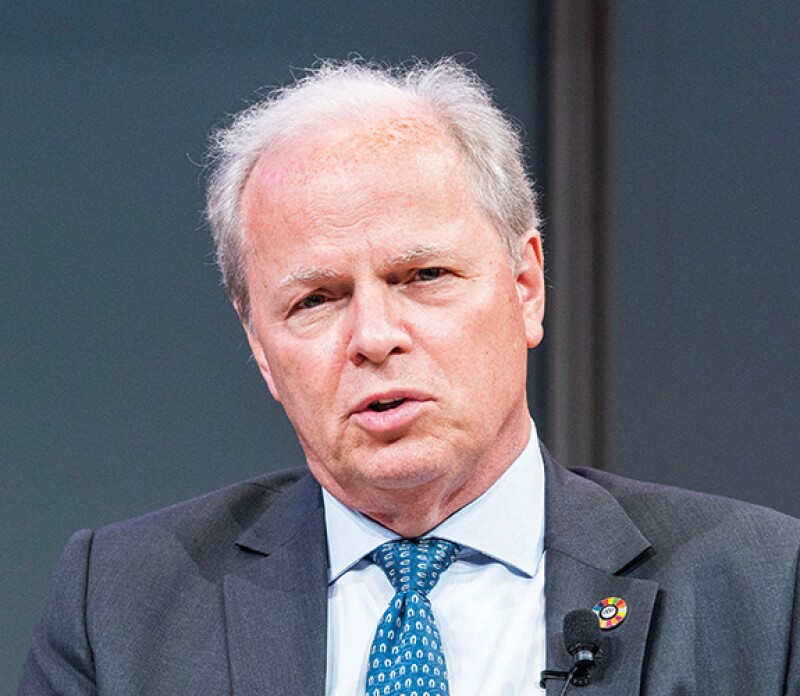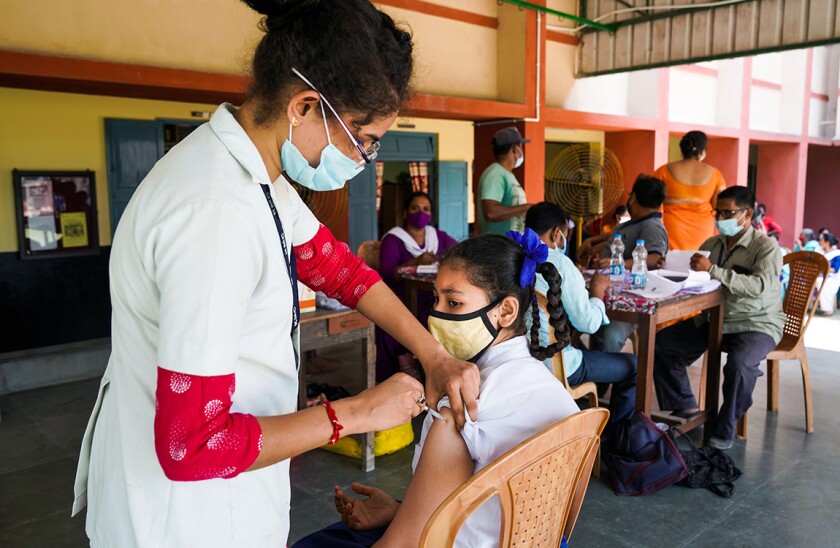Low income countries and development finance organisations are scrambling to find ways to make up for devastating cuts to official development assistance by the world’s leading donors.
For the first time for nearly 30 years, four of the biggest donors — France, Germany, the UK and the US — all cut their ODA in 2024. If they go ahead with announced cuts this year, it will be the first time in history that all four have cut ODA simultaneously for two years in a row.
World Bank and International Monetary Fund officials argue private sector solutions could alleviate some of the shortfalls, but many doubt it.
“We all recognise the fact that the realities of the world have changed and there is a scarcity of ODA,” said Ewa Korczyc, practice manager at the World Bank, at an Atlantic Council debate in Washington on Tuesday. “We recognise that the solutions need to come from also tapping into the resources of the private sector. The question of how to do it, and what the role of the official sector is in intermediating or incentivising some of it, is a critical one.”
But this aspiration leaves some experts unconvinced. Hung Tran, a senior fellow at the Atlantic Council, wants the IMF and World Bank to come up with concrete ideas on how to compensate for the 25% fall in ODA over the last two years. “Every year they say the same thing and nothing changes,” he told Global Markets.
Precipitous fall
The cuts to ODA, mainly by rich nations, have been significant. The OECD projects a drop of between 9% and 17% this year, after an estimated 9% in 2024. The outlook beyond 2025 remains highly uncertain, it says.

“ODA is falling but we have also to keep in mind that the composition of expenditures within ODA is changing rapidly,” said Axel van Trotsenburg, senior managing director at the World Bank, in a discussion organised by the Center for Global Development on Wednesday.
“A lot of the money is staying in the donor countries for covering the cost of refugees. That is an additional challenge, particularly for the poorest countries.”
The cuts are already having severe consequences.
Gunn Jorid Roset, director general of the Norwegian Agency for Development Cooperation (Norad), told GlobalMarkets the ODA cuts “are dramatic and will impact millions… ODA cuts have significant negative impacts on vulnerable populations, especially in the poorest regions.”
Second order effects, she added, include “disrupted progress in health, education and infrastructure and rising costs for debt servicing, crowding out essential investment in long term development.”
Alex Farley, policy manager on development finance at Bond, a UK network for NGOs, said: “Children around the world are at risk of missing out on vaccines, whilst girls risk losing access to education, family planning and reproductive health clinics, and healthcare services in refugee camps, including HIV and AIDS clinics, are being forced to close.”
World Bank “well equipped”
The World Bank is closely monitoring the impacts. The International Development Association, which finances low income countries, raised almost $100bn in its replenishment for the three year period from July 2025, though cash contributions were flat on the previous time.
The Bank has also mobilised an extra $100bn for its International Bank for Reconstruction and Development arm that lends to middle income countries.
“We are well equipped in terms of our own capacity,” Anshula Kant, the World Bank Group’s chief financial officer, told GlobalMarkets. “But if you look across the world, government budgets are stretched. Large shareholder governments — donor governments — have competing demands on their budgets. In terms of the pure aid flows, it does impact in many cases.”
Bertrand Dumont, director general of the French Trésor, said “It’s not only budget constraints — there is an element of ODA fatigue,” in the CGD discussion. “Some countries that benefit from ODA are now effective competitors [with donor states] on global markets. [Others] seem to be countries which are trapped in a cycle of programmes with the IMF or with the World Bank, and it’s giving the impression that we have not been successful in helping them.”
Kant said that while there had been “little impact” from the cuts on the World Bank directly, it was “working closely with these aid agencies in certain geographies”.
“In terms of partnerships where we work, especially in more vulnerable, challenging environments, it may have an impact,” she said. “But for us, what we are seeing and what we are trying to do is one: maximise the efficiency of our own resources [and] how we use them.”
The scale of the cuts has fuelled speculation that the World Bank could respond with a request to its shareholders for a capital increase.
Last year the Bridgetown Initiative to reform the international development and climate finance architecture, led by Barbadian prime minister Mia Mottley, called for new general capital increases.
But Kant told GlobalMarkets an increase was not a “pressing need” because of the increases in capacity the Bank had achieved through balance sheet optimisation and contributions from donors. She said that when she joined the Bank in 2019, the IBRD was allocating around $28bn but the latest year it managed $41bn.
Private sector solutions
The effect of ODA cuts can be worse when governments have financing difficulties.
The World Bank and IMF are working to ensure external flows to lower income country governments are maintained, including through greater private sector involvement.
“One of the big concerns we have is that in 2024 low income countries faced a historic high in their external refinancing needs,” said Allison Holland, who leads the debt policy division of the IMF’s strategy, policy and review department.
“In 2025 we’re still going to see refinancings at that level, around $35bn a year, and for the foreseeable future. About 50% of that is debt falling due to official bilateral creditors,” Holland said. “Refinancing that debt, given all the pressures on ODA, is going to be a challenge and it’s one that we worry about.”
Discussions with G20 countries about keeping their net flows to developing countries positive have brought “challenges”, she said. But she sees a “promising avenue” in debt swaps and “credit enhancements to help countries tap into commercial financing at lower cost.”
The World Bank’s Korczyc said increasing private sector involvement was “a work in progress.”
“I think we are getting somewhere in those discussions and many partners are reaching out to us on how they could potentially collaborate with us,” including through the World Bank Group’s new unified guarantee platform.
“There’s a new mantra about mobilising the private sector,” said Dumont. “The slogan is there, but … it’s not that easy and we’re facing some resistance. It can be about revisiting prudential rules, standards for financial institutions and private companies.”
Norad’s Roset said it was “crucial that we manage to work together with the private sector and attract more capital to low and middle income countries, to ensure economic growth and reduce poverty. We recognise that by using government funding in more strategic ways we can reduce the risk for private capital through grants or guarantees, leading to increased sustainable investments.”
For Bond’s Farley, while private sector financing and guarantees “have a role to play in financing development… its ability to do so at scale and in the most challenging of contexts is often overstated. The return-seeking and risk-averse nature of most private sector activity limits its ability to alone address areas critical for sustainable development. Private finance needs to supplement ODA, not replace it.”
